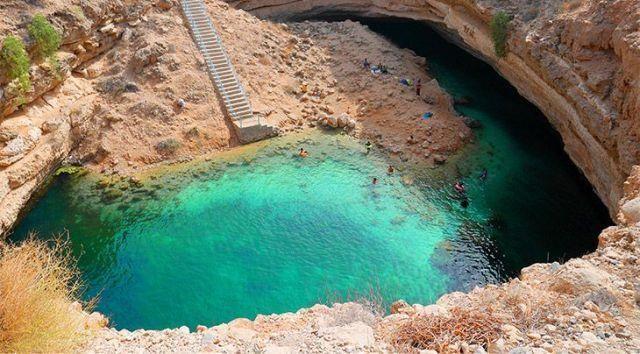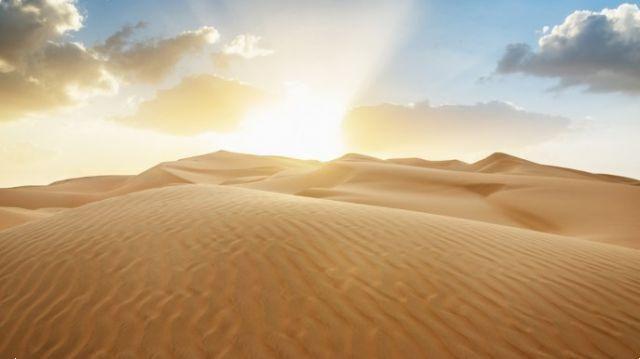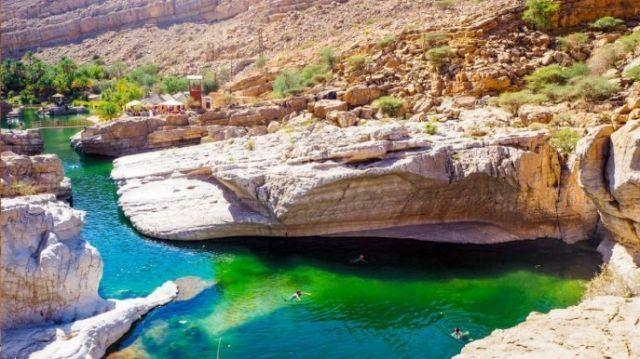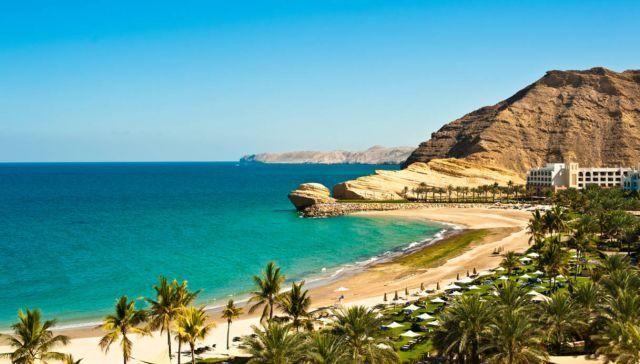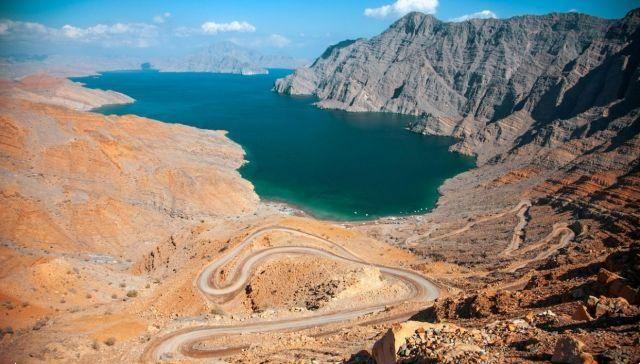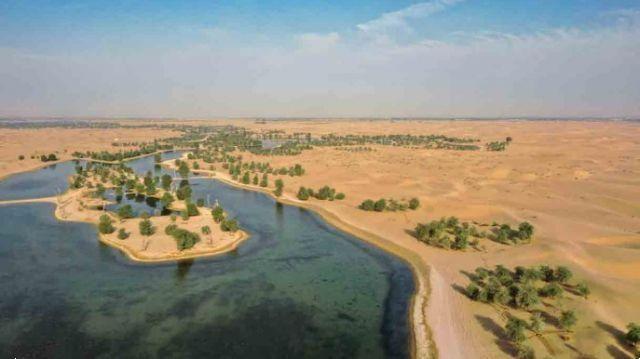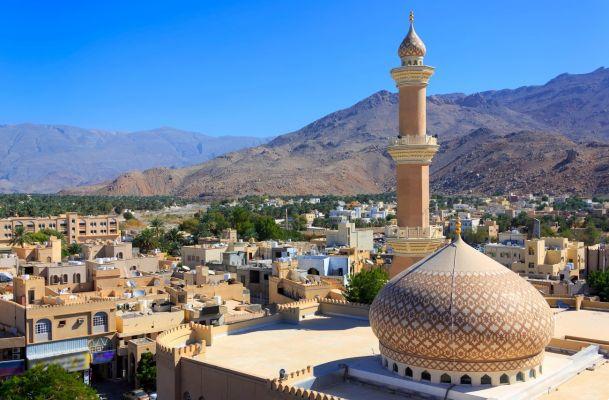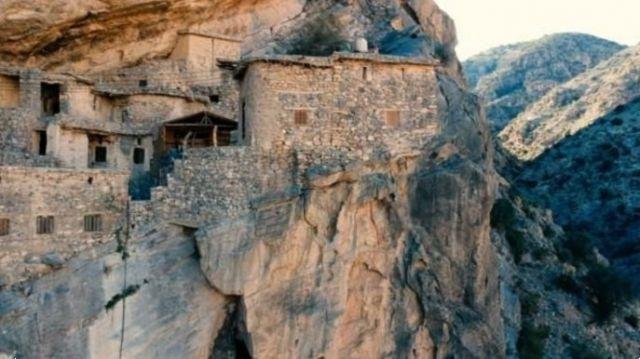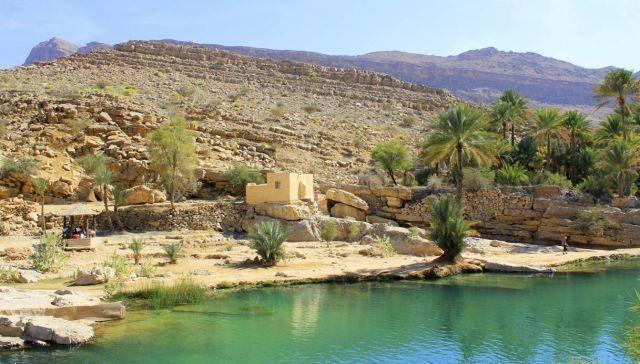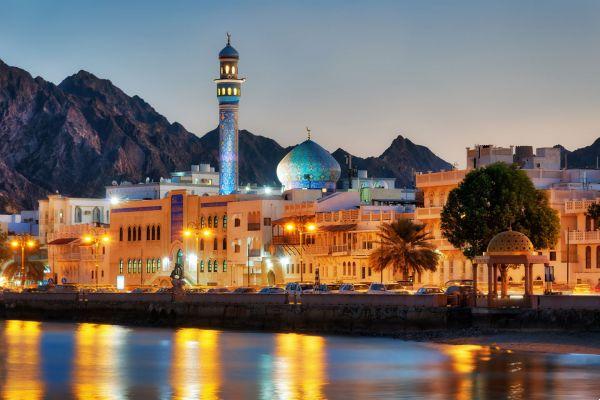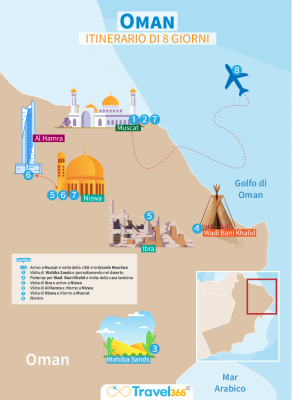 Visiting Oman between April and May when the weather is perfect is like experiencing all the Arabian Nights in one holiday.
Visiting Oman between April and May when the weather is perfect is like experiencing all the Arabian Nights in one holiday.
The Sultanate of Oman is located in the south-eastern area of the Arabian Peninsula and extends for over 300.000 kilometres. It is the point where Asia and Africa meet and where three different climates coexist: temperate, desert and tropical. L'Oman it is in fact embraced by mountains and its deserts end in the Indian Ocean and the Arabian Sea. It is currently a country that is still little known, but which certainly deserves more than one visit.
With a warm climate all year round and which can become scorching in summer, choose the spring, from March to May, it really means enjoying the best that this hospitable and generous country can offer. Between brocades, spices and traditional jewels that are sold in the many souks of its cities, moving on to the desert with its very high dunes, up to the dream beaches, Oman will dazzle you and make you want to return soon to discover its other treasures .
If you have chosen spring, with its gentle climate, start savoring Oman from nature. Reach the Ras Al Jinzil nature reserve, where turtles lay their eggs. In April, with a little luck and by booking the visit, you will be able to witness the race of thousands of baby turtles emerging from the sand to take to the sea. The reserve is located along the coast, around Ras Al Hadd, about 3 hours' drive from the capital Muscat and offers guided tours at 9.00am and 16pm. It is best to go with comfortable shoes to walk easily on the sand.
Given the magical season of spring and the mild climate that floods Oman between April and May, get married in the mountainous area of Jabal Al Akhdar, on top of the Hajar massif. Here the earth is flooded with shades ranging from pale pink to crimson for the period of blooming of roses. The roses, cultivated for centuries according to tradition, are carefully harvested at this time of year in order to obtain attar, the precious rose water which is the emblem of the country and its refined culture.
First the petals are selected for distillation, then they are placed in the borma, the clay bowls, which in turn contain fresh water and which are then placed on the fire. Here the vapors distill the precious rose water, the basic element of many Omani perfumes, also used in exquisite pastries. The Rose Mountain is located 160 kilometers of asphalt road from Muscat and the last stretch that passes through the villages can only be traveled by off-road vehicles.
Oman is also a UNESCO heritage site. In fact, in the Dhakiliya region lies the Bahla fortress, one of the 4 historic fortresses in the country. Built between the 1987th and 12th centuries in adobe, a mixture of clay, sand and sun-dried straw, it is a typical and magnificent example of the imposing architecture of pre-desert areas. The fortress became part of the world heritage site in XNUMX and since then impressive restorations have been completed along the XNUMX kilometers of walls surrounding the fort. Visiting Bahla in spring weather will allow you to enjoy the fort without languishing in the desert heat.
The incense route, which crosses the UNESCO World Heritage Site, has also been named region of Dhofar in the south of Oman and which can finally be covered in various sections. The road crosses desert and hills; it once allowed the trade of a precious resin obtained from boswellia, a precious shrub, which made the Sultanate rich and is still known throughout the world today. The heart of the region is Salalah, the capital renowned for its incense souk. Thanks to the spring climate, you will be able to fully experience the lush nature, among the banana trees and date palms, of the most fertile land in all of Oman. Then head towards the archaeological sites, to the north.
Also visit Mirbat, the ancient capital of Dhofar and travel along the road towards the Roub Al Khali desert for a while, up to the lost city of Ubar, without missing the wadis, where the incense tree grows. Wadis are typical Omani canyons, and usually a river flows at their base, making the area fertile but at risk of flooding. The bottom of these canyons is lush and is frequently cultivated. The advice is to visit more than one, perhaps choosing those that have created typical villages. Even the ancient incense route, with the wadis, have become a UNESCO heritage site.




